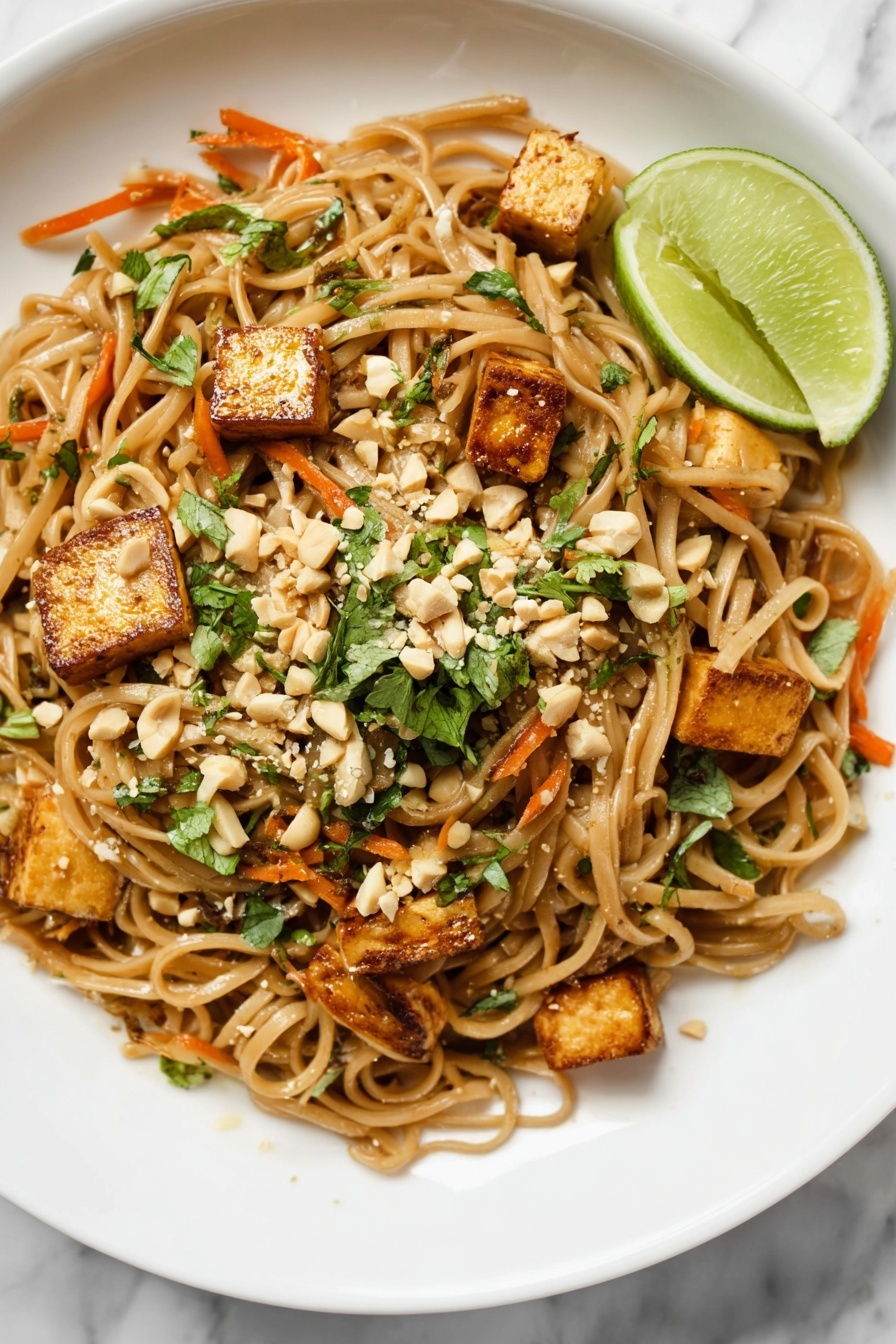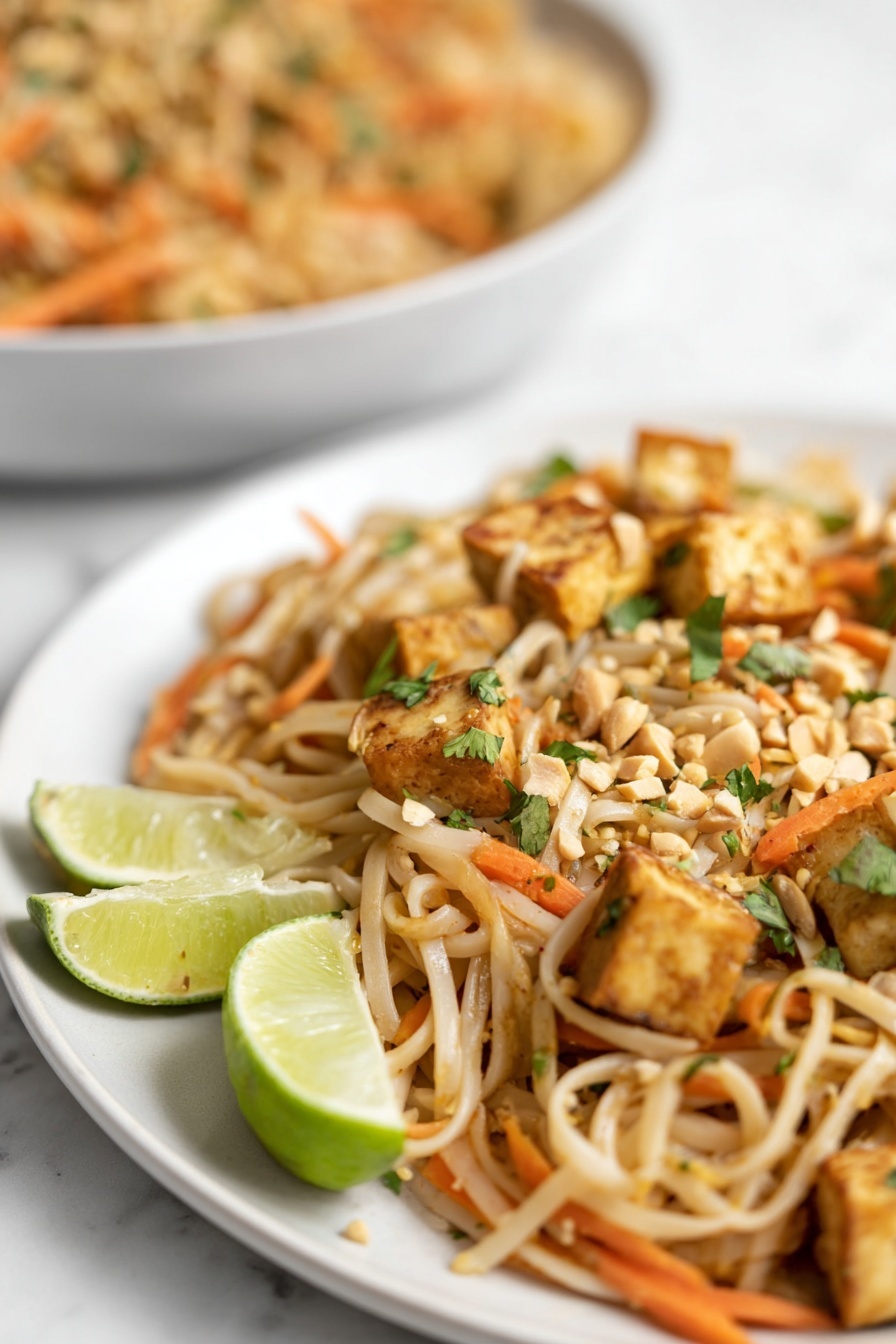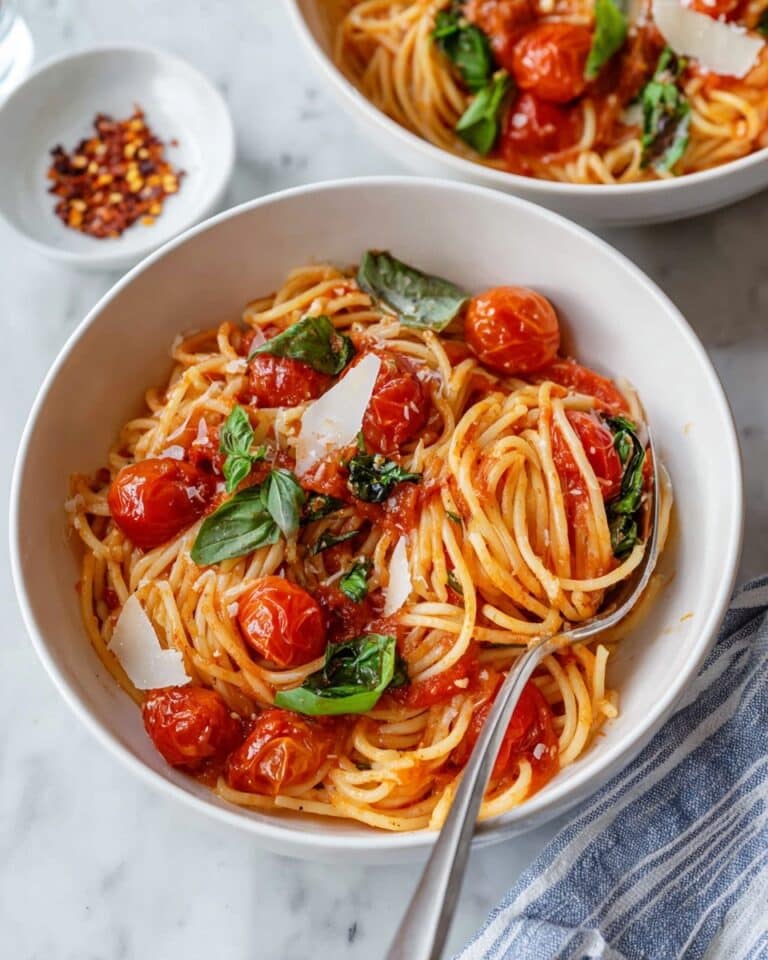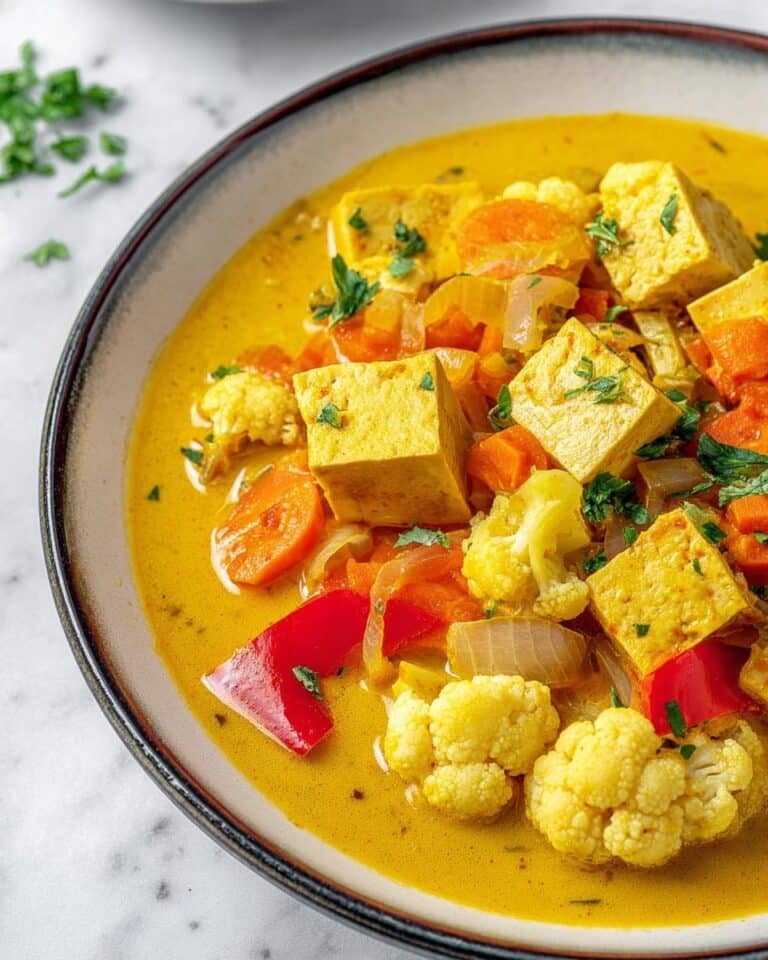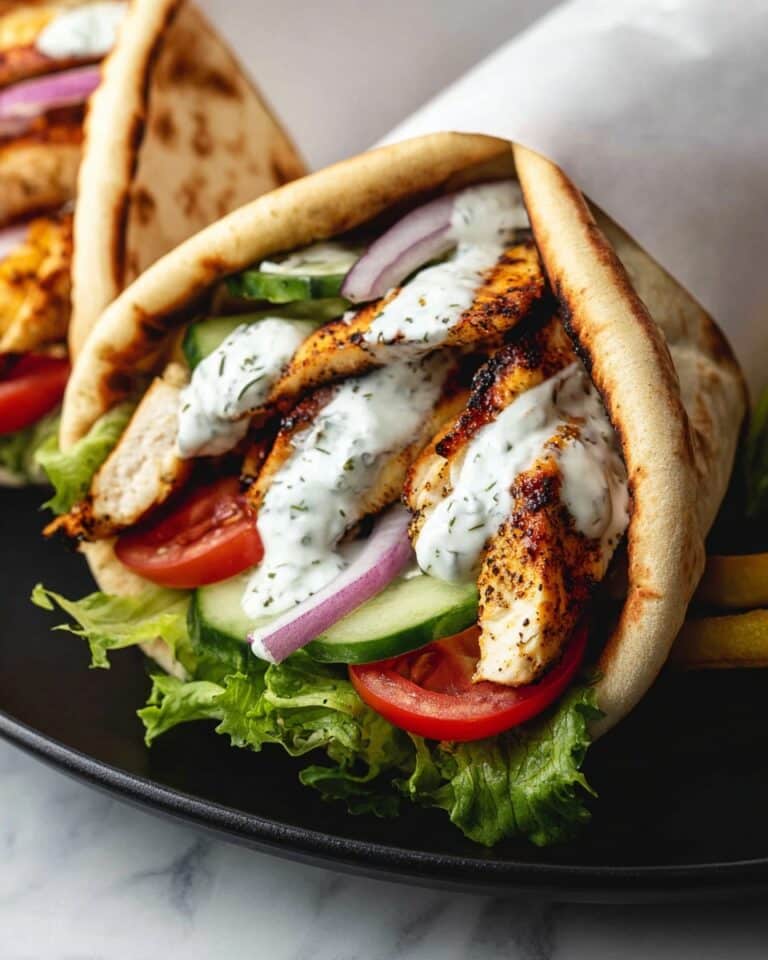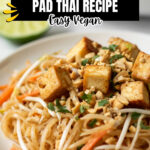Vegan Pad Thai Recipe
If you’ve been craving something tangy, sweet, and utterly addictive but also plant-based, you’re going to love this Vegan Pad Thai Recipe. It hits all the right notes—tender noodles, crispy tofu, bright veggies, and that perfect sauce that ties everything together. I promise, once you try this, it’ll become a staple in your recipe rotation. So, grab your wok (or big frying pan!), and let’s dive into this fan-freaking-tastic dish.
Why This Recipe Works
- Balance of Flavors: The combo of maple syrup, lime juice, and soy sauce delivers that signature sweet, sour, and salty punch.
- Simple Ingredients: You probably already have most in your pantry, making it super accessible for a weeknight meal.
- Perfect Tofu Texture: Pressing and frying the tofu creates that crisp exterior and tender inside that’s key to this dish.
- Quick & Customizable: Ready in about 30 minutes and easy to tweak with your favorite veggies or spice levels.
Ingredients & Why They Work
The ingredients in this Vegan Pad Thai Recipe come together like a dream, each playing a role in bringing those vibrant Thai street food vibes to your kitchen. Look for fresh veggies and quality tofu—it really makes a difference.
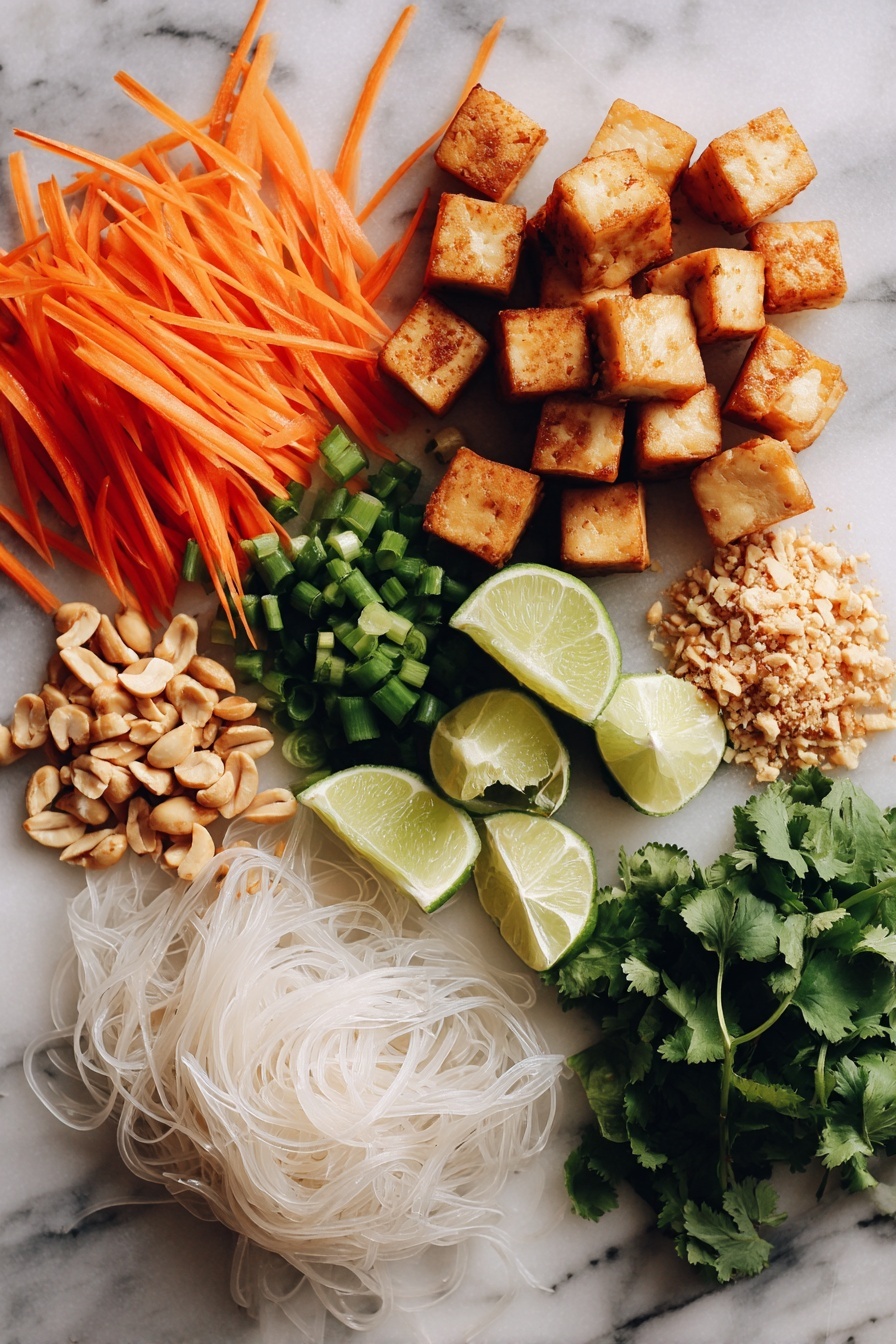
- Stir fry rice noodles: The foundation of this dish, they soak up all that tasty sauce perfectly without getting mushy.
- Vegetable oil: A neutral oil with a high smoke point, ideal for crisping up the tofu without burning.
- Extra-firm tofu: The star protein here—pressing it well helps it absorb flavors and get that wonderful golden crust.
- Soy sauce (low sodium): Adds salty umami richness without overpowering the other flavors.
- Rice vinegar: Brings a bright, mild acidity that balances the sweetness in the sauce.
- Pure maple syrup: A natural sweetener that adds depth and a subtle caramel note.
- Fresh lime juice: Essential for that tangy kick that wakes up the whole dish.
- Sriracha hot sauce: Just enough heat to make things interesting, adjust to your spice preference.
- Carrots: Sweet, crunchy, and colorful — julienned carrots are a quick, fresh veggie addition.
- Green onions: Add mild onion flavor and freshness that balances the cooked ingredients.
- Cilantro: Brightens the finished dish with herbal notes—don’t skip it if you love fresh herbs!
- Peanuts: Toasted and crunchy, they bring texture and that classic Pad Thai nutty flavor.
- Mung bean sprouts (optional): Adds crisp freshness, a popular authentic addition I love using when I can get them.
Make It Your Way
I’m all about making recipes feel like your own. While I love the classic flavors of this Vegan Pad Thai Recipe, I encourage you to customize it however you like—more veggies, extra spice, or maybe a different protein.
- Variation: I sometimes swap tofu for crispy baked tempeh—it adds this amazing nutty flavor and heartiness that’s a nice change of pace.
- Spice level: Love it spicy? Double the Sriracha or toss in some chili flakes. Want it milder? Just skip the heat completely or add less.
- Veggie swaps: If carrots aren’t your thing, bell peppers, shredded cabbage, or snap peas all work great and add different textures.
- Add scrambled “egg”: For an authentic touch, I sometimes scramble JUST Egg or your favorite vegan egg substitute into the mix—totally optional but tasty!
Step-by-Step: How I Make Vegan Pad Thai Recipe
Step 1: Prep Your Ingredients Like a Pro
Before you heat the pan, make sure everything’s prepped and ready to go. Julienne your carrots, chop those green onions and cilantro, and crush the peanuts. I like to press my tofu—if you don’t have vacuum-packed extra-firm tofu like I do, pressing helps remove excess moisture, so it crisps up nicely. Cut the tofu into ½-inch cubes, and set everything within arm’s reach. This makes cooking a breeze and stops you from scrambling around mid-recipe.
Step 2: Cook the Noodles Just Right
Bring a large pot of water to a boil, then add the rice noodles for just one minute—they cook super fast! Remove from heat and let them soak for 5 minutes. Drain and rinse with cold water to stop the cooking process and prevent sticking. Trust me—overcooked noodles are no fun, and this method gives you perfect chewy noodles every time.
Step 3: Whip Up the Delectable Sauce
While the noodles soak, mix your sauce ingredients—soy sauce, rice vinegar, maple syrup, lime juice, and Sriracha—in a small bowl. This sauce is where the magic happens! I usually give it a quick taste and adjust the sweetness or tanginess depending on my mood. It’s all about finding your perfect balance here.
Step 4: Get That Tofu Crispy
Heat your oil in a large pan over medium-high heat. Add the tofu cubes and cook, turning occasionally, until each side is golden brown and crispy. This can take about 8-10 minutes, but it’s so worth the wait. If your pan feels too crowded, do this in batches. Crispy tofu is the soul of this dish, so don’t rush it!
Step 5: Bring It All Together
Add the noodles, sauce, carrots, green onions, and half the cilantro to the pan with the tofu. Toss it gently but thoroughly so everything’s well coated and warmed through—about 2-3 minutes should do it. Keep an eye on the heat; too high, and the noodles might stick or burn, too low and you lose that perfect sizzle. Remember, you want vibrant veggies and tender noodles with a touch of char on the tofu.
Step 6: Serve and Celebrate
Dish up that gorgeous pad thai and sprinkle with crushed peanuts and the remaining cilantro. Serve it with lime wedges and mung bean sprouts on the side—those little extras add bright freshness and crunch I love. Don’t forget to squeeze lime juice right before eating to brighten every bite. Honestly, this is when the flavors come alive, and you’ll want seconds.
Tips from My Kitchen
- Press Tofu Well: Removing excess water is key to getting that tofu crispy instead of soggy; I usually press mine at least 20 minutes or use vacuum-packed tofu to save time.
- Don’t Overcook Noodles: Soaking after a brief boil keeps them tender but firm—overcooked noodles turn mushy quickly.
- Adjust Sauce to Taste: Sometimes my maple syrup jar is sweeter or tangier, so I tweak the quantities—always taste before mixing with noodles.
- Pan Size Matters: Use a big enough pan or wok to give everything room so the tofu crisps instead of steaming.
How to Serve Vegan Pad Thai Recipe
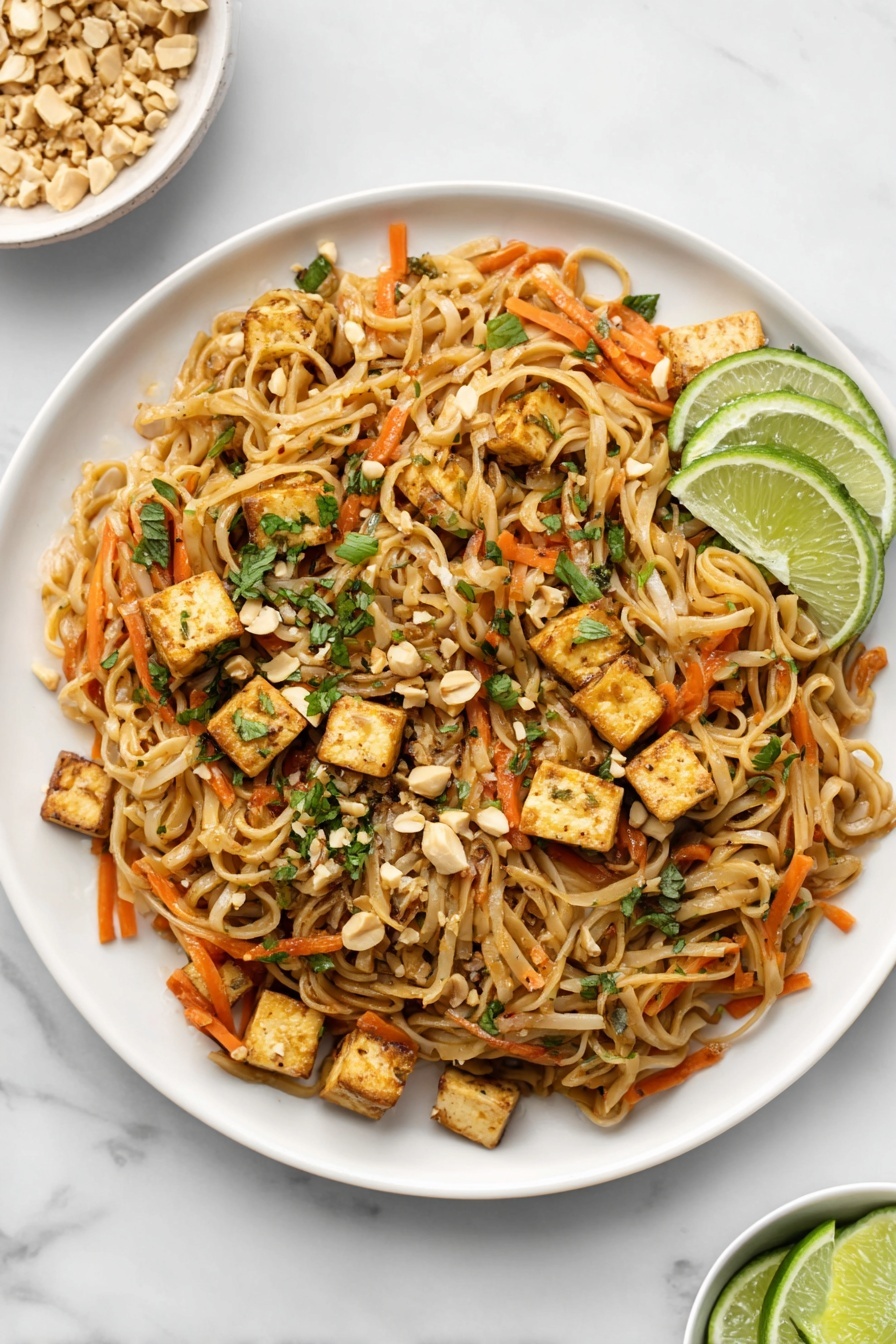
Garnishes
I always top my Vegan Pad Thai Recipe with chopped cilantro and crushed peanuts because they add that wonderful freshness and crunch—two things that really elevate the dish. The lime wedges are non-negotiable for me; nothing beats squeezing fresh lime juice over the noodles just before you dive in. And mung bean sprouts? Optional but highly recommended if you can find them—they bring a light texture contrast that’s incredible.
Side Dishes
Simple is best here. I love pairing my pad thai with a crisp cucumber salad dressed with a little rice vinegar and sesame oil, or sometimes some steamed edamame sprinkled with sea salt on the side. For something heartier, roasted peanut satay skewers or jasmine rice (if you want more carbs) complement it beautifully.
Creative Ways to Present
For special occasions, I’ve served this Vegan Pad Thai Recipe in individual banana leaf bowls (you can find them online), which adds a fun, authentic vibe. Another idea is plating it in a big colorful bowl with lime wedges, peanuts, and herbs all lined up around the edge so guests can customize their servings. It makes the meal feel festive and interactive.
Make Ahead and Storage
Storing Leftovers
Leftovers from this Vegan Pad Thai Recipe store beautifully in an airtight container in the fridge for up to 3 days. Just keep the garnishes like peanuts and cilantro separate if possible—they’re best when fresh. When you’re ready to eat, give it a good stir to reincorporate any sauce that may have settled.
Freezing
I’ve found freezing Pad Thai isn’t my favorite because the noodles can get a bit mushy upon thawing. If you do freeze it, make sure to freeze in single portions and defrost overnight in the fridge before reheating gently to avoid losing too much texture.
Reheating
To reheat, I toss the leftovers in a hot skillet with a splash of water or vegetable broth to bring back some moisture and heat through quickly. Microwaving works in a pinch, but the skillet method keeps the tofu from getting rubbery and reactivates the flavors much better.
FAQs
-
Can I make this Vegan Pad Thai Recipe gluten-free?
Absolutely! Just swap the regular soy sauce for a gluten-free tamari alternative. It won’t affect the flavor much and keeps the dish safe if you’re avoiding gluten.
-
What if I don’t like tofu – any alternatives?
No worries! You can replace the tofu with firm tempeh, crispy seitan, or simply load up on extra veggies like bell peppers, broccoli, and snap peas. Stir-fry those veggies first before adding the noodles and sauce for a hearty meal.
-
Can I prep this ahead of time?
You can prep all your ingredients in advance—chop the veggies, press and cube tofu, and even mix the sauce. Then when dinner time comes, everything comes together quickly. I recommend cooking the noodles fresh though, so they don’t stick or get gummy.
-
How spicy is this Vegan Pad Thai Recipe?
It has a gentle kick from the Sriracha, but you can adjust the heat easily—add more if you want it spicier or omit it altogether for a mild version. This flexibility makes it great for all spice preferences.
-
What’s the best way to press tofu?
Wrap your tofu block in a clean kitchen towel or paper towels, then set a heavy pan or book on top for at least 15-20 minutes to squeeze out excess water. This step helps your tofu crisp up when frying.
Final Thoughts
This Vegan Pad Thai Recipe is one of my all-time favorites because it’s incredibly flavorful, simple to make, and totally customizable. I love how it brings the taste of Thailand right into my kitchen without any fuss. Whether you’re cooking for a busy weeknight or impressing friends, this recipe always hits the spot. I can’t wait for you to give it a go and discover your own little ritual of squeezing that fresh lime over the top. Trust me, you’ll be hooked!
Print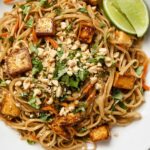
Vegan Pad Thai Recipe
- Prep Time: 10 minutes
- Cook Time: 20 minutes
- Total Time: 30 minutes
- Yield: 4 servings
- Category: Main Course
- Method: Frying
- Cuisine: Thai
- Diet: Vegan
Description
This Vegan Pad Thai recipe is a flavorful, vibrant, and easy-to-make version of the classic Thai dish. It features stir-fried rice noodles, crispy tofu, fresh vegetables, and a tangy, sweet, and spicy sauce. Perfect for a quick dinner that’s entirely plant-based and packed with delicious textures and flavors.
Ingredients
Noodles
- 7 ounces stir fry rice noodles
Tofu & Oil
- 14.5 ounce block extra-firm tofu, pressed and cut into 1/2 inch cubes
- 2-3 tablespoons vegetable oil
Sauce
- 4 tablespoons low sodium soy sauce
- 2 tablespoons rice vinegar
- 4 tablespoons pure maple syrup
- 2 tablespoons fresh lime juice
- 1 teaspoon Sriracha hot sauce
Vegetables
- 1 cup julienne sliced carrots (about 3 carrots)
- 3 green onions, chopped
For Serving
- 2 limes, cut into wedges
- 1/2 cup cilantro, chopped
- 1/2 cup crushed or chopped peanuts
- 1 cup mung bean sprouts (optional)
Instructions
- Prepare ingredients: Slice the carrots into julienne strips, chop the green onions, cilantro, and crush or chop the peanuts. Press the tofu if needed and cut it into 1/2 inch cubes. Having all ingredients ready will make the cooking process smooth.
- Cook the noodles: Bring a large pot of water to a boil. Add the rice noodles and cook for 1 minute. Remove from heat and let the noodles soak for 5 minutes until tender. Drain and rinse with cold water to prevent sticking. Set aside.
- Make the sauce: In a small bowl, whisk together low sodium soy sauce, rice vinegar, pure maple syrup, fresh lime juice, and Sriracha hot sauce. Set aside to let the flavors meld.
- Fry the tofu: Heat vegetable oil in a large pan or skillet over medium-high heat. Add the tofu cubes and fry, turning occasionally, until all sides turn golden brown and crisp. This will take about 8-10 minutes.
- Combine and stir-fry: To the pan with the tofu, add the cooked noodles, sauce, julienned carrots, chopped green onions, and half the chopped cilantro. Stir everything together and cook for a few minutes until heated through and the sauce evenly coats the noodles and tofu.
- Serve: Serve the pad thai immediately. Garnish each serving with the remaining cilantro, crushed peanuts, and mung bean sprouts if using. Offer lime wedges on the side for squeezing over the dish to add fresh brightness before eating.
Notes
- For a gluten-free version, substitute tamari for soy sauce to keep it safe for gluten sensitivities.
- To make a vegetable-only version, replace tofu with veggies such as red pepper strips and broccoli florets. Stir fry them until tender before adding noodles and sauce.
- Using pre-cut julienne carrots can reduce prep time significantly.
- To add more protein or a different texture, consider cooking up some JUST Egg scrambled-style and adding it to your pad thai.
Nutrition
- Serving Size: 1 serving
- Calories: 350 kcal
- Sugar: 10 g
- Sodium: 600 mg
- Fat: 15 g
- Saturated Fat: 2 g
- Unsaturated Fat: 12 g
- Trans Fat: 0 g
- Carbohydrates: 40 g
- Fiber: 4 g
- Protein: 15 g
- Cholesterol: 0 mg

